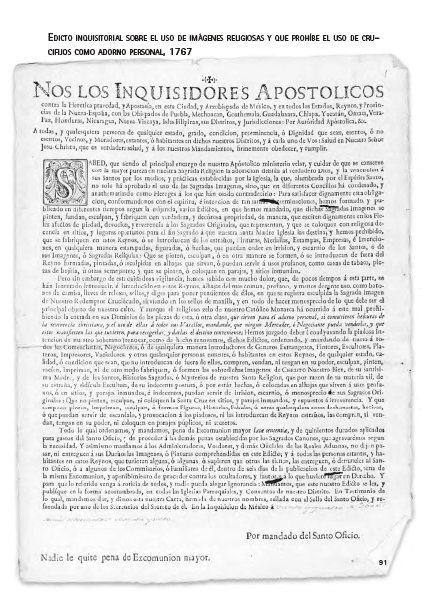Histories of New Spain: Heresy, Excommunication, and Punishment for using religious objects
Religious images, figures of saints, and crucifixes were prohibited by the Tribunal of the Holy Office of the Inquisition during the second half of the 18th century. Find out why.





